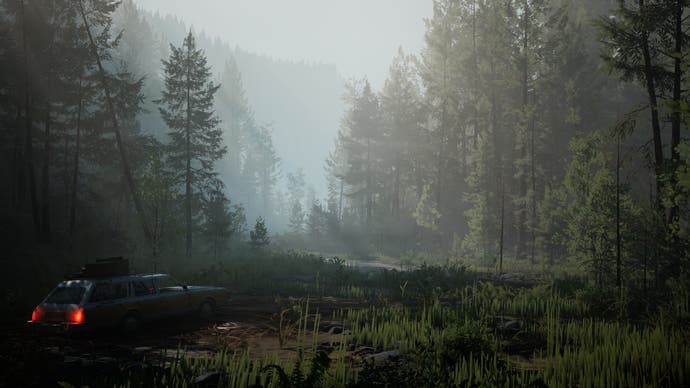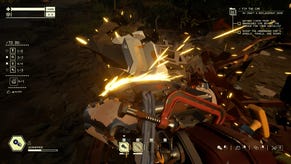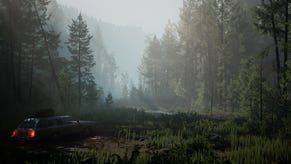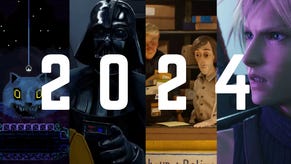Explore the zone and bond with your station wagon in Pacific Drive
Road-like.
There are lots of games about cars, but Pacific Drive is different. What makes it stand out for me is the car itself - or, more specifically, the relationship you have with the car.
Is relationship the right word? I think so. Years ago, when I was due to give birth to my son, my car got an unexpected engine problem and had to go into the garage for a few days. I was genuinely worried I would not be able to bring my baby home in my own, very loved, car (which I had named The Beast). Even though logically I understood it would make no difference in the grand scheme of things, the thought of using a rental for such an important family moment really bothered me.
This is because my car was not just a means of transportation to me. It was a core part of my life, full of memories and adventure. I knew how it worked - I understood putting it into reverse could periodically turn on the screen wash, I was used to the buttons that occasionally got stuck, I knew I had to be gentle with the cup holder or it could unexpectedly eject a hot beverage all over the dashboard.
It is this sort of bond the Pacific Drive developer Ironwood wants players to develop with the game's station wagon. The studio doesn't want players to only look out for themselves when they buckle up and take to the road. It also wants players to look out for and care for their station wagon as well.
As such, Pacific Drive's station wagon is a character in its own right, with its own quirks and foibles for players to learn. And, when you are isolated out in the pacific northwest with supernatural phenomena happening all around you, this car is one loyal companion you don't just need to have by your side. You're going to want it there too. After all, save for a few NPC interactions over the radio, you are alone out there. This car is your lifeline - the Wilson to your Tom Hanks, if you will.
Pacific Drive is the debut title from Ironwood. It's a driving game and a survival game. You restore and upgrade your station wagon from the safety of an abandoned garage. You then hop in and head out, in a bid to "unravel a long-forgotten mystery" at the "heart of the Olympic Exclusion Zone" in the Pacific Northwest region of America.

Last week, I took part in a hands-off preview for Pacific Drive with Ironwood's creative director Alex Dracott, lead designer Seth Rosen, producer Alyssa Askew and marketing and communications specialist Blake Dove. Here, I got to see just what first-person survival from the front seat of an often rickety station wagon looks like.
After starting the preview off in the garage and doing normal car maintenance like filling up the tank with fuel and charging the battery, things quickly took a surreal turn. We got supernatural weather, eclectic creatures and what is clearly one pretty big government secret (alas, despite my best efforts, all plot details beyond what we already knew were all kept under wraps).
A map on the wall showed Pacific Drive's overworld. Emanating from the garage hub (depicted as a small house), routes start to lead out into the wild, with various icons and numbers marking each intersection.
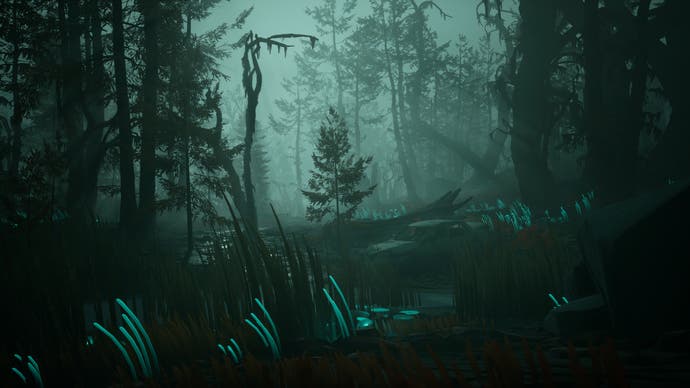

White tree icons show locations that are stable enough to support the gateway players will need to open in order to make it back to the safety of the garage, while the number icons show how much "energy" you will need to open the gateway.
With a destination decided upon, we got into the station wagon, and set out into Pacific Drive's mysterious zone on a supply run. For the sake of the demo, the player was on the lookout for "anchors" and other useful items in a heavily wooded area. An in-car device showed a mini map and gave an idea of where these anchors were, as well as markers for buildings that may have some precious resources tucked away within them.
Put like this, it all sounds fairly straightforward, but the journey was hampered not only by pouring rain, but by electrical phenomena and strange atmospheric shifts that happened as we drove. At one point, a wind squall blew the poor station wagon off into the woods, only to be stopped by a fortuitously placed tree stump.
"Weather for us is more than just a visual wrapper in setting the mood and theme of the space," Dracott explained, commenting that there will be rain and fog for that "Pacific Northwest experience", as well as a full 24-hour day cycle.
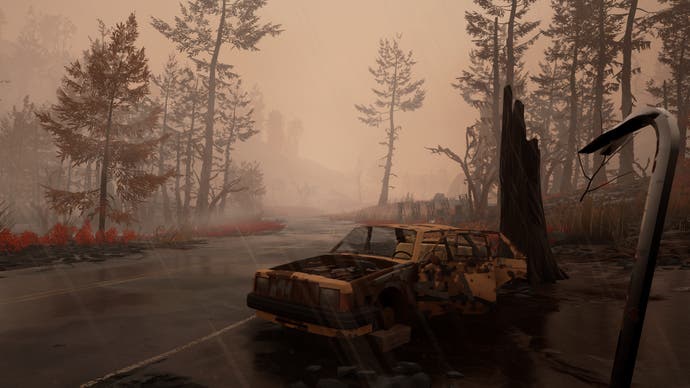
"It [affects] the way your car handles... when it comes to car handling, we are aiming to find a balance between representative and accessible that works and lets you feel the difference between driving offroad or driving in the rain or driving on mud, but isn't to the point where it is so realistic and accurate that that it's actually going to end up annoying you while you play.
"We want to motivate you to go and get more interesting car parts, and specialised tires... that mentality actually carries through to you know, just interacting with the car mechanically in general.
"We have a ton of different parts in the car that you can swap out, but for none of it do you really need to understand how an engine works."
As someone who knows her handbrake from her windscreen wipers, but still has to look up how to check the oil in my car, this is good to know.
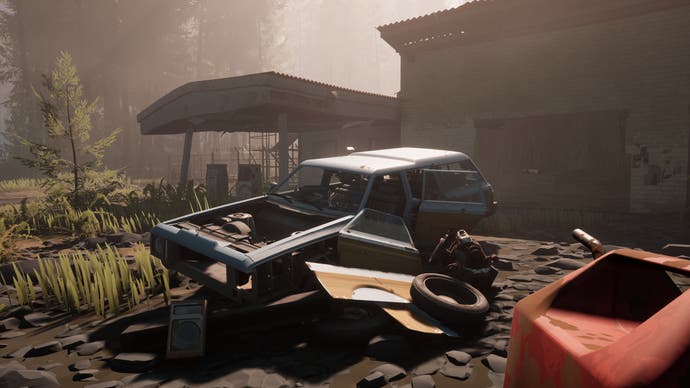
As we headed further into the zone, there were options to jump out of the car and collect useful bits of scrap and the like. A "scrapper" tool allowed the player to remove car doors from abandoned vehicles and harvest "broken bunnies" for parts (bunnies, as in those like dust bunnies, but that can cause electrical or radiation damage. No rabbits were hurt in the making of this preview). Additionally, a blow torch was deployed, so the player could tinker away at the car while out in the zone.
"The car's health is generally a better indicator of how your run is going than your own health," I am told. "As long as the car is repaired enough and in good enough shape, it will protect you from all the different elemental hazards and dangers that the zone offers."
Dracott elaborated on this point further: it sounds like it gets at a fundamental shift in the team's understanding of its own game. "Initially, we were gonna plan out the game to have relatively scripted moments of character building for the car, the same way you would in a traditional, linear single-player game," he stated. "But, what we found in development was that the kind of memories and the kind of stories that people were having with their car were often procedural, and just happening on their own accord...Those ended up being the really strong bonding moments that people were having with their car."
You will need to bond, too, because you aren't entirely alone in the zone. In the preview we came across an "Abductor" that dared to try and make off with the entire station wagon as it was being driven, and a "Pickpocket" that pinched the car's door. In a Q&A after the gameplay demo, the developers explained these anomalies are designed to "change your plans" during a run, rather than to cause any real "damage". Another anomaly mentioned but not seen was a "Crawler" that will "burrow" and "bounce you around... leaving a nastiness in [its] wake".
Back to the demo, once the station wagon's door was successfully retrieved from the Pickpocket, it was time to return to the garage with the spoils, and to do this, a portal had to be activated. Extraction point portals are shown as diamond-like markers on the car's mini map. However, getting to the chosen extraction point was far from easy. As soon as the portal was activated, the world literally started to close in on the zone. A red ring of doom started to collapse in, akin to the gas in Warzone, making this break to freedom quite fraught.
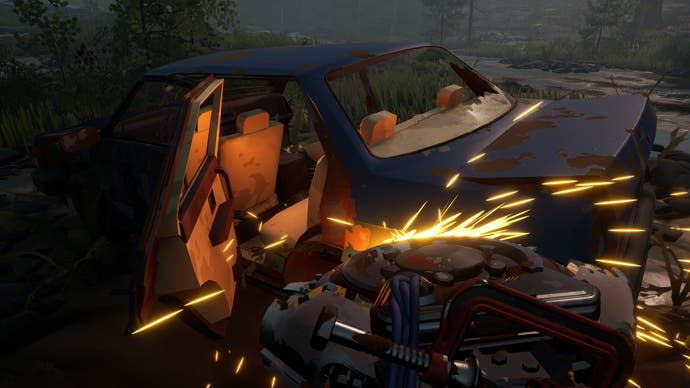
"When you open these gateways, the energy required to do that is pretty disruptive to the zone - it doesn't take kindly to that," the developers explained. "You don't want to be on the outside of that circle. It will melt your car pretty quickly and that's a good way to not make it back in one piece." Duly noted!
As the storm closed in over the car, things became volatile. Bits of the environment started splattering the vehicle, lightning raged, rocks started levitating, the world turned a fiery red and the music pounded so intensely I felt it in my chest.
Eventually, the car and its driver made it to the portal, and the gameplay returned to the safety of the garage. A breakdown of that run's statistics was then provided, covering anchors collected, cars looted, distance driven, anomalies uncovered, storms evaded and energy used.
Back in the safety of the garage, it was then time to take care of and upgrade the now rather beaten up car, and unlock recipes to make new tools for scavenging at the "inventing station". While the upgrades mentioned in the preview were fairly basic (a door that is more resistant to certain damage types and such), the developers stated upgrades will become "more sci-fi" as the game goes on.
There was also a "tinker station" in the garage that allowed the player to diagnose the quirks of their car - things like the radio turning on when you use the headlights. This is all part of the car's developing "personality" and how the player will form an attachment to the vehicle - another sign of the way Ironwood is clearly treating the car like a human character.
Away from the preview's woodland-based run, the Pacific Drive team stated there will be other biomes to discover. There is more than just "roads and wilderness" out there, I am told, and I well believe it.
Pacific Drive will be motoring its way onto PlayStation 5 and PC (Steam and EGS - no word on Steam Deck yet) later this year, although the developers are keeping a tight lid on a specific release date for now.
